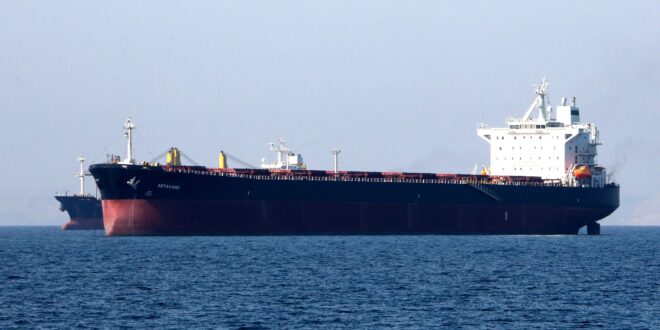Iran is considering building a railway that connects the Port of Khomeini to that of Lattakia, on the Mediterranean, according to Arabi 21.
Iran plans to launch a railway connection project between Iran, Iraq, and Syria, allowing it to reach the Mediterranean. This project will give Tehran access to the Mediterranean Sea through the Syrian coastal port of Lattakia.
The Iranian Minister of Roads and Urban Reconstruction, Rostam Qassemi, signed, during his visit to Iraq, an agreement with the Iraqi government, to start the executive work of the railway connection project between Iran’s Shalamcheh and Iraqi Basra after a 20-year hiatus, according to the Iranian news agency, IRNA.
The project will allow railway networks in Iraq to link Iran with Syria, on a road from Basra to Baghdad and from there to the Iraqi-Syrian border city of al-Qaim.
According to the Iranian Students News Agency, U.S. forces at the al-Tanf military base on the border triangle between Iraq, Jordan, and Syria are no longer an obstacle to the completion of the project. The agency explained that the current route will pass from al-Qaim to Damascus through the Homs governorate, to the Mediterranean port of Lattakia.
Iran relies on Iraq’s railways, particularly the newly constructed line north of Baghdad, which runs through Fallujah, Ramadi, and Haditha, and extends to the al-Qaim area bordering Syria.
Regarding the railroad connection project, former Syrian diplomat in Washington, Bassam Barbandi said the project would amount to an “Iranian economic takeover of the region.”
In an interview with Arabi 21, he explained that Iran wants -through the project- to establish its own ports and railways. Iran aims to stay away from any pressures that could be imposed on it, from the countries bordering the Arabian Gulf, or even Turkey, which connects it with Europe.
“Iran’s insistence on implementing the project, although it has been stalled for 20 years, demonstrates the instability of the waterway in the Arabian Gulf,” he added.
He pointed out that the project links the port of Khomeini on the Arabian Gulf, with the port of Lattakia on the Mediterranean Sea, through Iraq. This will allow Tehran to be the center of economic gravity in the Middle East, in the post-consensus phase to resolve the nuclear issue if this is done. He pointed out that the project railroad connection is part of China’s funding for Iran and part of the Silk Road, which is considered one of the foundations of Chinese policy.
He stressed Iran’s willingness to spend billions in exchange for the project’s success, because of its significant economic and political gains. The railway connection project could be a trade route from China and Central Asia to Turkey and Europe, passing through Iran, Iraq, and Syria.
He warned that lifting U.S. sanctions on Iran if the nuclear agreement is revived, makes it easier for Tehran to complete the project, especially since it will recover billions of frozen dollars.
He stressed that the project railway connection, “enshrines the Iranian presence in Syria and Iraq,” stressing that the continued presence of the Syrian regime will be the most important way to make the project a success. Tehran, however, seeks through the project to consolidate its control in the region as a whole and not only in Syria.
The former diplomat predicted that the economic sanctions imposed on Iran and the Syrian regime will not affect the nature of the project’s work. He explained that Tehran’s dealings with Damascus depend on the principle of non-sanctions barter, and the project can be financed by offering internal treasury bonds for investment, according to Iranian official sources.
The project is expected to cover about 1,800 kilometers from the Port of Khomeini on the Iranian side of the Gulf waters to the Syrian Mediterranean port of Lattakia.
 Eurasia Press & News
Eurasia Press & News



